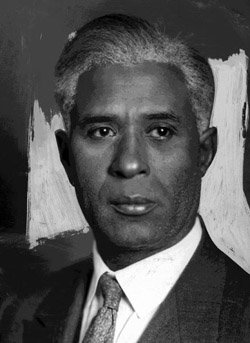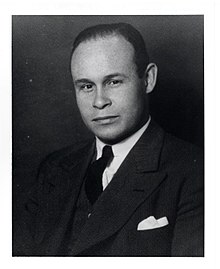
Garrett Morgan was born in Paris, Kentucky in 1877. He was the son of former slaves and spent his early childhood working on the family farm and attending school. Morgan moved to Cleveland on 1895 where he went to work as a sewing machine repair man. His curiosity led to the development of many useful and helpful products. One of his inventions was an early traffic signal. After witnessing a collision between an automobile and a horse-drawn carriage, Morgan was knew that something should be done to improve traffic safety. Morgan was one of the first to apply for and acquire a U.S. patent for a traffic signal. He also had numerous other inventions, like an improved sewing machine, a hair-straightening product, and a breathing device that would then provide the blueprint for World War I gas masks.

Philip Emeagwali is a Nigerian computer scientist. He dropped out of school at age 14 because his father couldn't continue paying his school fees, but he got homeschooled until his father until he until Philip "knew more than he did." Philip could do 100 math problems in 1 hour. Emeagwali lived in a building crumbled by rocket shells. He believed his he could get himself out of the situation. So he studied hard and received a scholarship to Oregon State University when he was 17 years old. In 1989, Emeagwali used 65,000 processors to construct the world's fastest computer, which performs computations at mind-boggling 3.1 billion calculations per second.

Marie Van Brittan Brown invented the first home security system. Brown was born in Queens, New York, on October 22, 1922, and resided there until her death on February 2, 1999. The patent application was filed on August 1, 1966, under the name of Marie Van Brittan Brown and Albert L. Brown, of 151-58 135th Avenue, Jamaica, New York, and it later influenced modern home security systems that we still use today. Marie had noticed that the crime rate in her city was very high and came up with the idea of a home security system, that could allow users to see visitors from a camera attatched to a cabinet added to the door. She invented it with her husband, Albert. If the user was concerned about a threat, a button could alert police, watchmen, or even neighbors. Another button could allow the visitor to come in.

Charles Richard Drew was born on June 3, 1904, in Washington, D.C. into an African-American middle-class family. He was an African-American physician who found ways to process and store blood plasma in blood banks. He researched in the field of blood transfusions, developing better techniques for blood storage, and applied this knowledge to developing large-scale blood banks early in the time of World War II. This allowed medics to save thousands of lives, because they did not have a place to store large amounts of blood that could be used. This product is in use today, and since it was invented, Drew has saved millions of lives.

Engineer and inventor Lonnie G. Johnson was born in 1949, in Alabama. He earned his master's degree in nuclear engineering from Tuskegee University, and worked for NASA and the U.S. Air Force. After revising an invention of a high-powered water gun, Johnson's invention, the Super Soaker became a top-selling item by the early 1990s. The water gun became a huge hit. Since then, he has been developing the Johnson Thermoelectric Energy Converter, also known as JTEC, which is an engine that can convert heat into electricity directly.